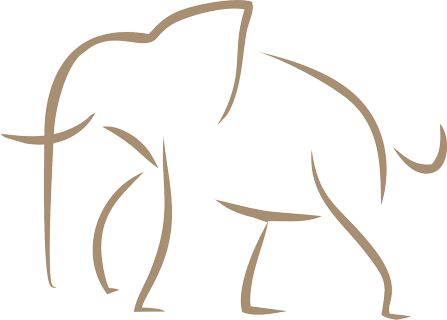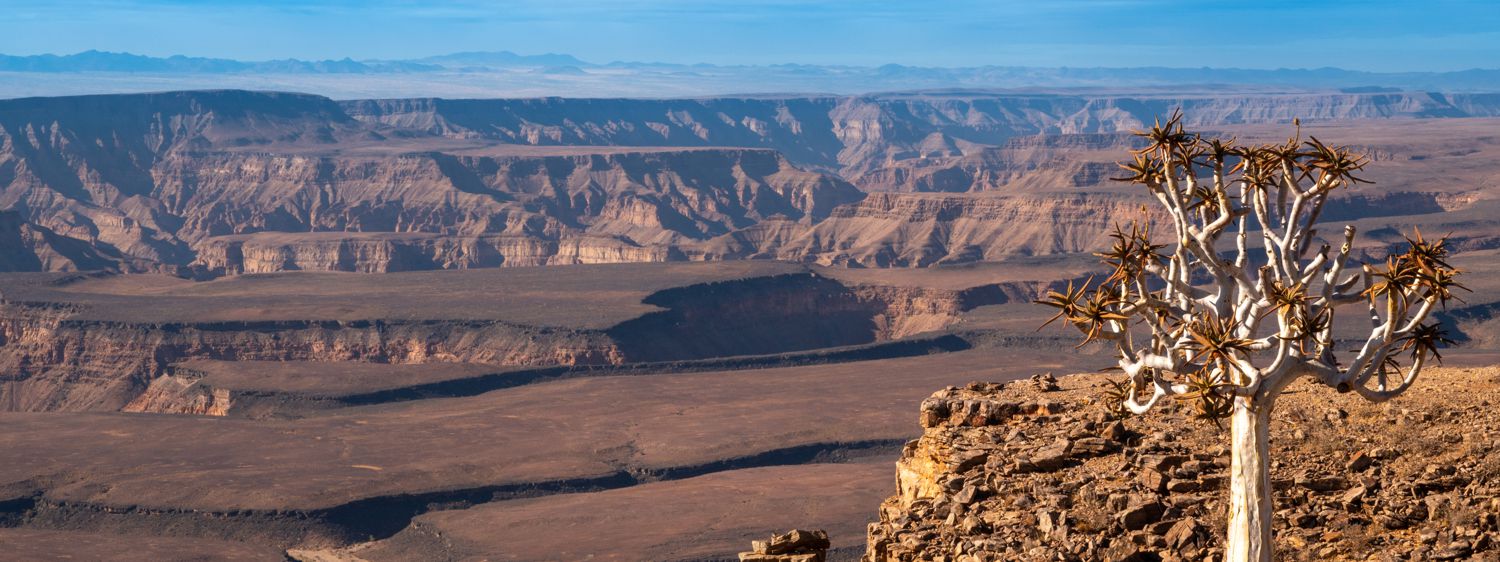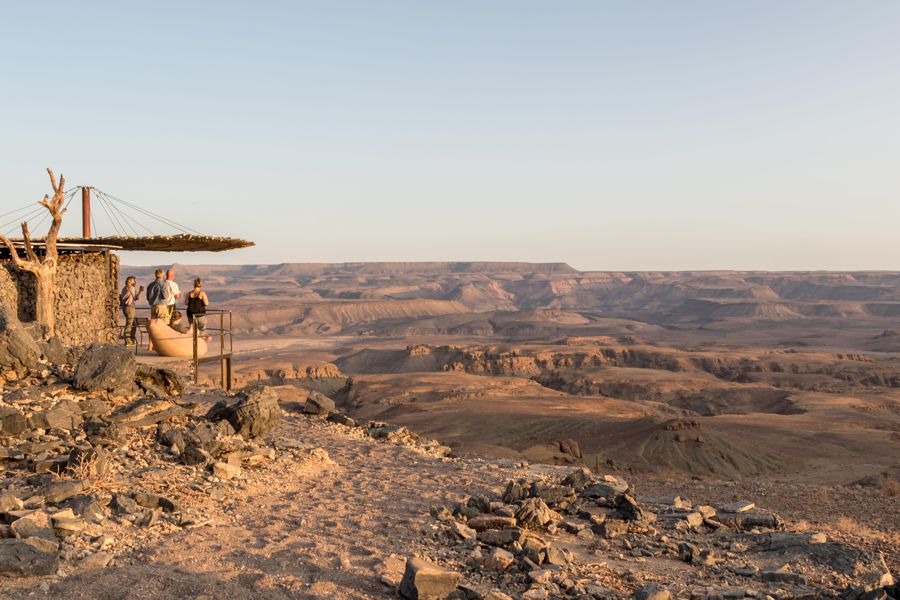The country’s most spectacular geological phenomenon and the highlight of Namibia’s “Deep South” is the Fish River Canyon. The famous ravine lies in the lower reaches of Namibia’s longest river, the Fish. It took millions of years to evolve to its present shape – a massive 161 km long, up to 27 km wide and up to 550 m deep.
The /Ai-/Ais Hot springs, located on the southern edge of the Canyon, together with the rest of the canyon are part of the /Ai-/Ais Richtersveld Transfrontier Park, one of an increasing number of “peace” or cross—border parks in southern Africa. Spanning across southern Namibian and parts of north western South Africa it boasts one of the most species-rich arid zones in the world. It also encompasses the Richtersveld Nationalpark in South Africa and the Orange River Valley.
The San have a legend that the wildly twisting Fish River Canyon was gouged out by a frantically scrambling snake, as he was pursued into the desert by hunters. However, the geological story is a bit different…
Eroded over many millenia, the Fish River Canyon is the second-largest natural canyon in the world. Set in a harsh, stony plain, dotted with drought-resistant succulents, such as the distinctive quiver tree, the canyon is a spectacular natural phenomenon that took hundreds of millions of years to evolve. Because the river flows intermittently, there is always water in some of the pools on the canyon floor, except in very dry years.
Baboon, rock hyrax, ground squirrel and klipspringer are often seen in the canyon, while the presence of leopard and mountain zebra is indicated only by tracks left behind at waterholes.
For adventurous travellers, the Fish River Canyon offers one of the toughest, yet very popular hiking trails in southern Africa. The five-day hike from the northern view point Hobas to Ai-Ais at the southern edge of the canyon is Namibia’s most popular long-distance hiking trail – and with good reason. The magical 85 km route follows the sandy riverbed past a series of ephemeral pools, always having the canyon walls rising up on both sides. Due to flash flooding and extreme heat in the summer months, the hiking route is only open from mid-April to mid-September.
At a glance
Why you should visit
This enormous gash in the surface of the planet in the south of Namibia is an almost implausible landscape. Seen most clearly in the morning, the Fish River Canyon is desolate, immense and seemingly carved into the earth by a master builder. The exposed rock and lack of plant life is quite startling and trying to take pictures is soon replaced with thoughtful reflection and a quiet sense of awe. This is a landscape of gigantic and imposing proportions.
Our favourite time to visit
The summer months can get brutally hot in the remote and desolate area surrounding the Fish River Canyon. To make the most out of your visit to the canyon, it is best to visit in the months April, May or June. The air is clear during these months, making for great photo opportunities of the magnificients landscape and the temperatures are low enough to allow for hikes into and along the canyon.



